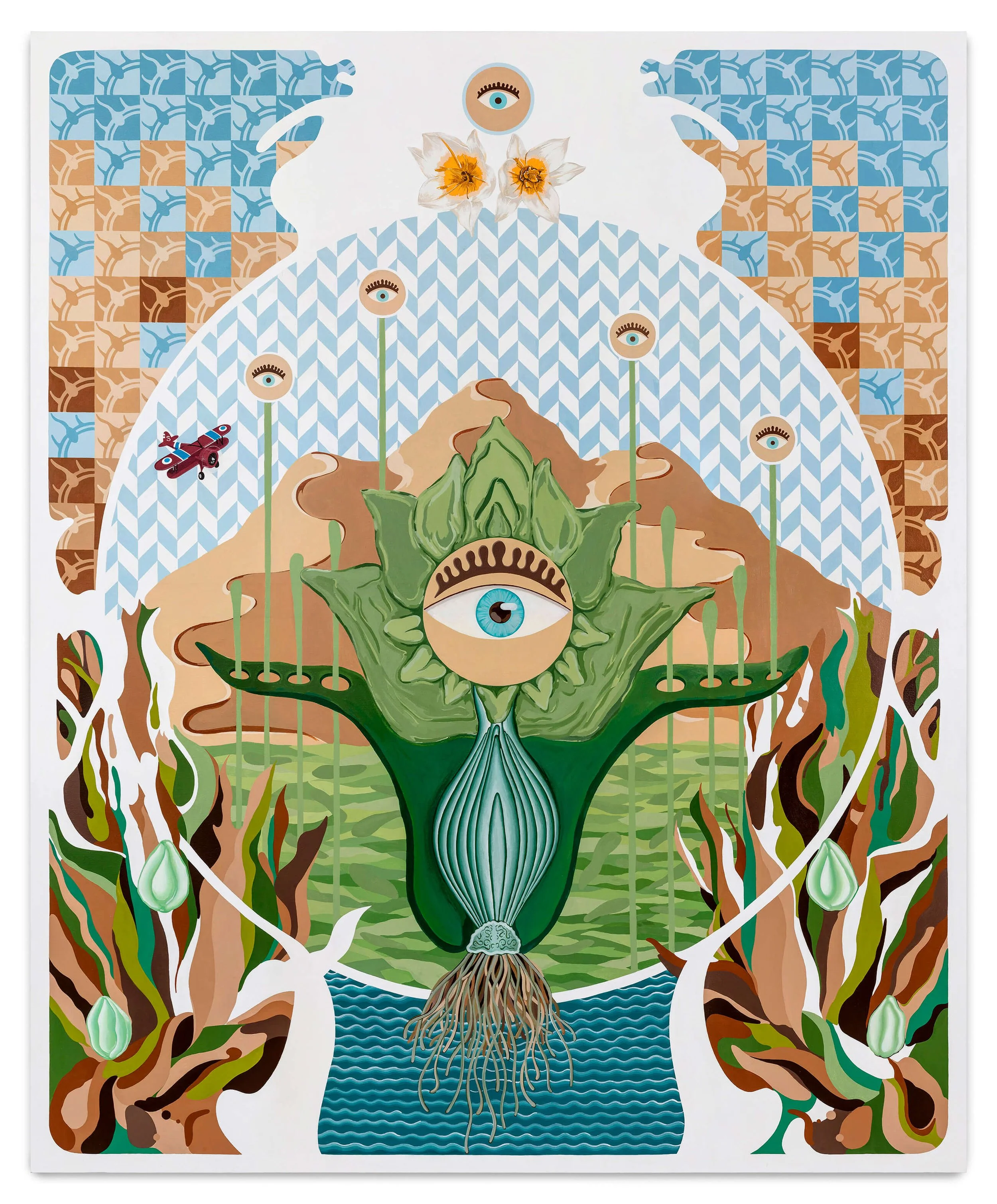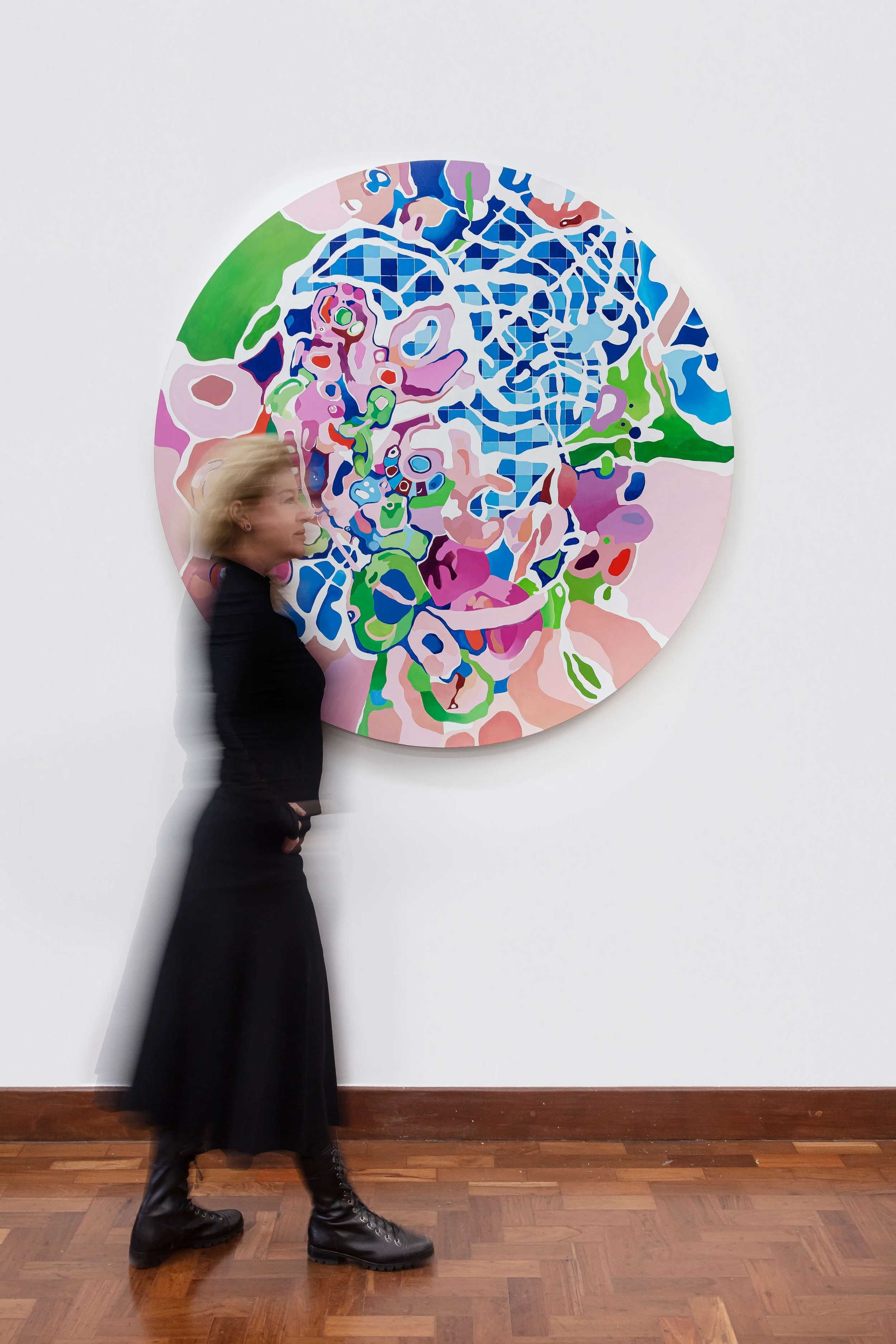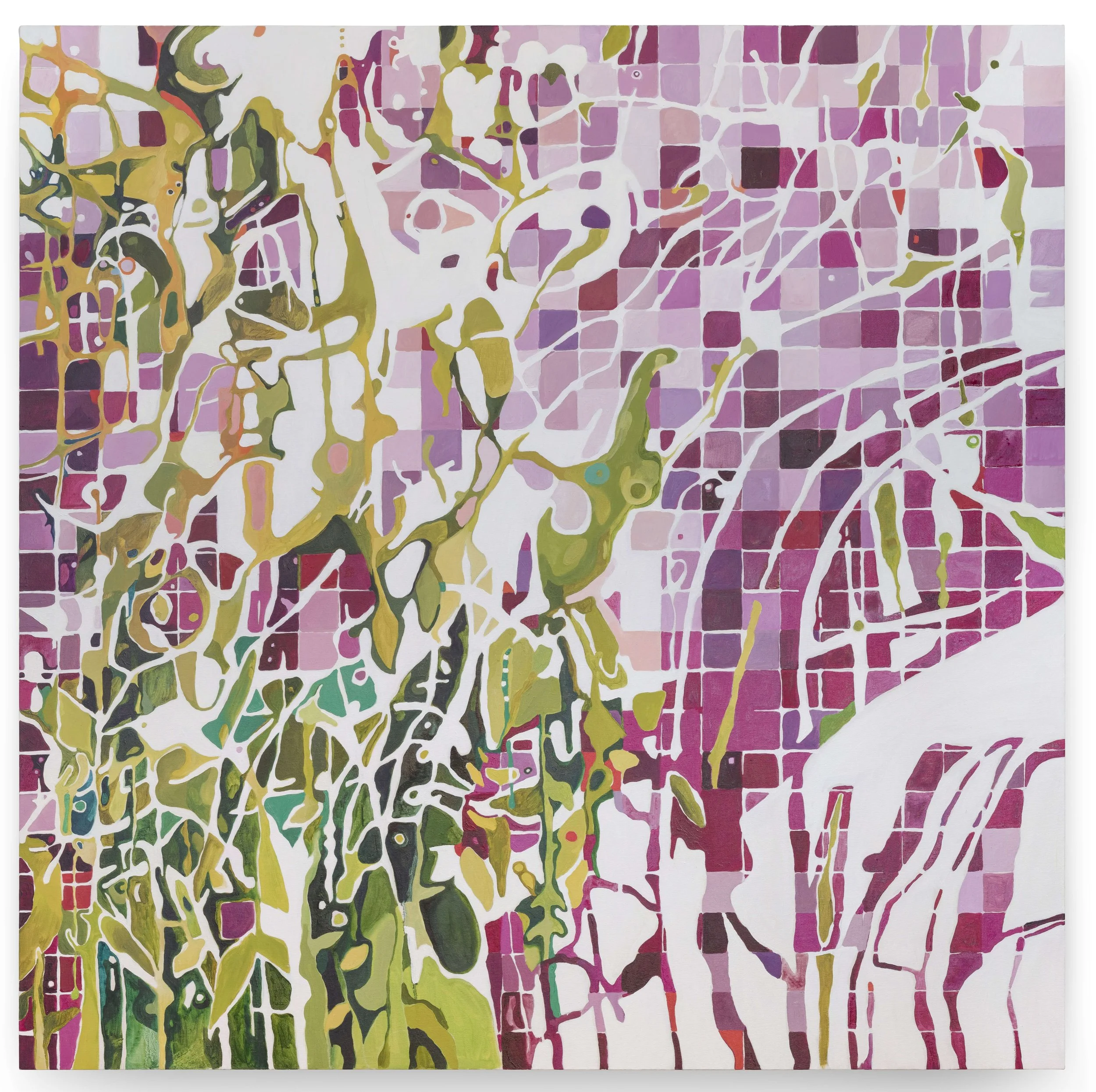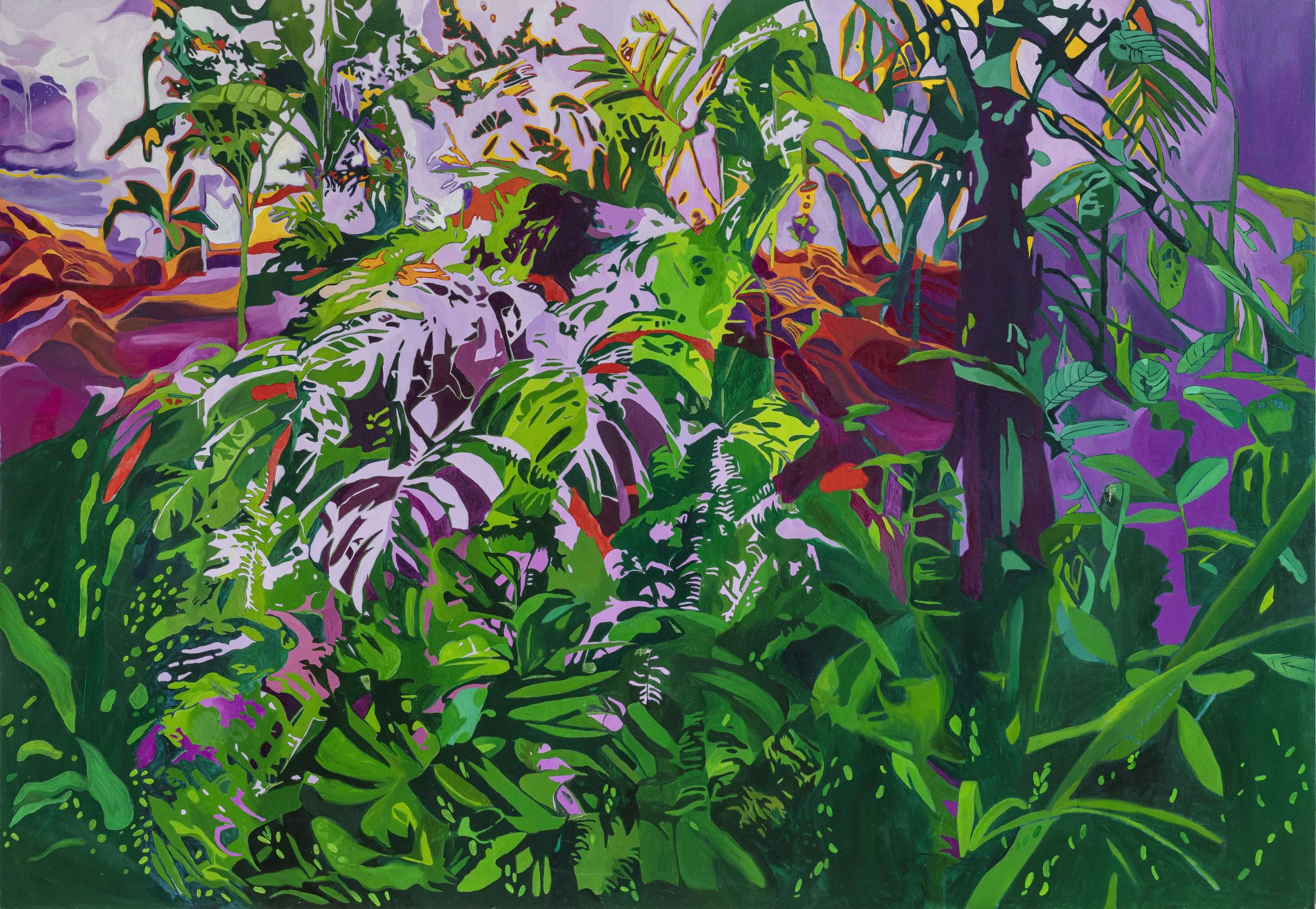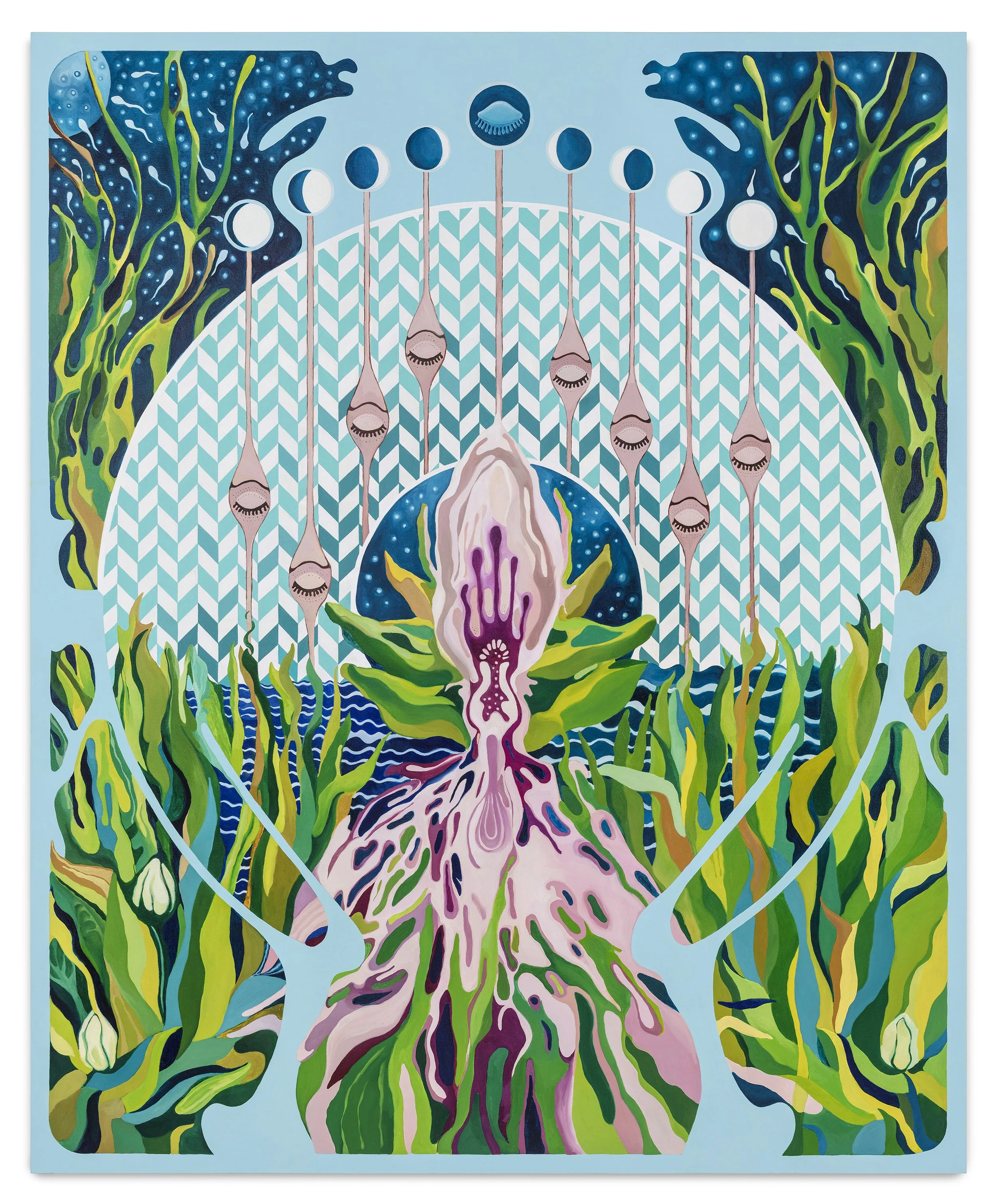lana Wajcberg: Botanical Abstraction, Memory, and Deep Femininity in Contemporary Brazilian Art
Ilana Wajcberg (São Paulo, 1970), a Brazilian visual artist, lives in São Paulo.
She graduated in Design and Architecture at H.I.T. and pursued an M.F.A. in Fine Arts in Paris, France.
Exploring architecture and botany, she developed series such as “Edited Nature,” “Layers,” and “Botanical Garden.” Her work features graphic patterns, curved lines, and landscapes. For her, plants and architecture serve as open-air encyclopedias.
Wajcberg blends botanical themes to create dreamlike, abstract landscapes that blur illusion and reality. Her research explores femininity through personal experiences, combined with architectural and natural elements.
Ilana developed a style inspired by nature’s mysticism, merging her passions for watercolor and nature. Using various techniques, she captures the beauty of plants, flowers, and other elements.
Artist Statement
Ilana Wajcberg develops her artistic practice through a continuous search for her roots and essence. Her work explores memories, origins, and experiences that transcend generations—not in pursuit of definitive answers but as an ongoing process of questioning and new perspectives.
Her creative process begins with watercolor, a medium that enables fluid and immediate expression of emotions and ideas. These compositions explore multiple visual and conceptual layers, blending abstraction and figuration in a minimalist approach that broadens discussions on identity and perception.
Building upon these initial studies, Wajcberg extends her research to acrylic, oil, and other paints on canvas, creating layered surfaces that challenge traditional flatness. The resulting effect captivates the viewer, leading them into a sensory and reflective engagement with the artwork.
The Deep Femininity series emerges from the artist's perception of the changes that occurred both in her body and in her being after becoming a mother. The series consists of six works and, despite being an autobiographical production, it serves as an invitation to all women to explore their own phases and engage in self-discovery. As a continuation of her previous series, elements that characterize her paintings are also present, such as patterns, bold colors, and geometric grids, all layered together.
Interview with Ilana Wajcberg
Your work explores the intersection of architecture, botany, and memory. What draws you to these themes, and how do they reflect your personal story?
Since I was little, painting has always been my way of expressing myself—a way to create my own inner world. I grew up in a busy house with five siblings, and as a child I asked my mother to let me study art at university, but she told me art wouldn’t be profitable. So I chose the closest path: architecture—and I fell in love. It was a choice that ended up weaving together my tastes and references from these two worlds, which for me are not so distant. I have always been fascinated by the dialogue between art and architecture—Bauhaus, Mondrian, Roman art—all of that shaped me.
I traveled a lot with my mother, who was a teacher and a pianist, visiting museums around the world. This nourished my imagination even more. After years working as an architect, the longing to paint grew stronger and stronger until it could, when I returned to Rio de Janeiro, I decided that life is too short not to fulfill dreams. I opened my studio and haven’t stopped since. In 2016, I moved to São Paulo, which is one of Brazil’s most vibrant art hubs.
Botany entered my path like an open window: I have always been fascinated by its variety of forms, textures, and colors. It became a territory for dialogue with my personal story, but also a living metaphor. Today, in addition to creating my paintings, I share this passion through workshops at the Rio de Janeiro Botanical Garden—a place where nature, history, and culture meet, just like they do within me.
Botany also helps me talk about the feminine. I use plants as a metaphor to explore what it means to be a woman in all its layers and roots—and this is how the Deep Femininity series was born, weaving together memory, body, and nature in a single narrative.
Watercolor plays a significant role in your process. What does this medium allow you to express that others might not?
For years I worked with oil paint, a traditional medium that offers a lot of control, time, and beautiful results. I also drew a lot, but always felt the process was very slow. Watercolor, on the other hand, brought a speed and fluidity that reflect how my mind works—in an intuitive way.
For me, watercolor is like a breath: unpredictable, alive, sensitive. It forces me to let go of control and surrender to a dialogue with water, paper, and pigment. Unlike other media, where you can erase and redo, in watercolor each layer remains like an overlaid memory.
It’s a technique that allows me to explore transparency, delicacy, and subtlety. Each stain, each unexpected flow tells an intimate story, full of emotion. I love the fact that the light comes from the paper itself, captured beneath thin layers of color, creating an almost ethereal sense of lightness. Watercolor teaches me to listen, to be patient, and to embrace the unexpected—qualities that today are essential to my artistic practice.
The Deep Femininity series feels both deeply personal and universally resonant. How did motherhood shift your creative approach and inner dialogue as an artist?
Deep Femininity was born from an experience that crosses past, present, and future. Before becoming a mother, I was a daughter—the only woman among five brothers—and I had to find my feminine side within a very masculine environment. Painting has always been that place of reconnection with myself.
I went through a loving relationship with my son’s father, but it ended when I was still four months pregnant. That marked my process deeply: I had to understand myself as a single mother and reinvent who I was. Today, I am the mother of an incredible 20-year-old man, and I see how care has always been present in my life—first when I cared for my mother and my son, and now through my work. My personal story is completely intertwined with my paintings; the care I practice in life overflows into my art.
Motherhood opened up a new space in me of softness and depth—but also brought conflicts: the desire to dive into creation versus the responsibility and presence that a child demands. Being a mother taught me to listen to my body and respect a different rhythm.
With this series, I explore femininity not only as something biological, but as a living, multiple force that keeps transforming along with me.
You mention painting as a form of research—into identity, nature, and self. What discoveries have most surprised or moved you in that journey?
What surprised me the most was realizing how much the act of painting reveals layers that are hard to notice in everyday life—memories, fears, desires. Each work feels like an archaeological excavation within myself, and what I uncover through the images that emerge almost always reveals something I didn’t even know I was searching for.
I discovered that even when I paint nature or architectural structures, I’m actually investigating the boundaries between myself and the world—what remains fixed and what flows, what I choose to hide and what I allow to appear. These moments when something new becomes clear inside me—through a stain, a line, or a layer—are what keep me on this path and push me to keep exploring.
Your use of layered surfaces challenges traditional flatness. How do you think about dimension, depth, and space in your work?
All my questions about layers come from my perspective as an architect. Just like in architecture, I think of painting as a space built through contrasts, volumes, and overlays. For me, it feels more natural to work with multiple layers than with a single surface. It’s like life itself: it can’t be resolved in a day, nor is it made of just one layer, but of many that accumulate, blend, and remain in process.
In watercolor, this translates into delicate transparencies that overlap—a thin wash that lets you see what came before, like a memory that insists on staying. With each new layer, more density, depth, and texture emerge—just like human beings, who are also made of delicacies and thicknesses, of clear parts and darker ones.
Depth doesn’t come only from perspective, but from this accumulation of marks that creates a living space—a space that invites the viewer’s gaze to enter slowly, to come closer, to discover hidden details, like someone inhabiting a structure built by time.
As someone who has studied and lived in both Brazil and France, how have these environments shaped your aesthetic and worldview?
Throughout my life, I have lived in many places and traveled the world working as a flight attendant—my creativity comes from movement; I need it to exist. Exploring new cultures, flavors, and landscapes—all of this feeds my gaze and my art.
Brazil opened up for me like a tropical adventure: intense light, lush vegetation, a vitality that asserts itself even amid the chaos of the cities. This energy is always present in my work—sometimes in an explicit way, other times as a subtle suggestion.
France, on the other hand, brought me another kind of depth: a long history, a delicate attention to detail, a pictorial tradition, classical structures. There, I developed an eye for architecture, for the organization of space, for the cultural layers hidden within each image.
Each place left its mark. Brazil gave me color and intensity; Israel, where I lived, brought the silence of the desert; France gave me gastronomy, rigor, and refinement. Each culture captivates me in a unique way and expands my repertoire.
The meeting of these worlds shaped me: I am made of intuition and care, nature and structure, freedom and form. I feel that I belong here and there—but, in the end, I belong above all to myself and to what I keep creating in movement.
What message or experience do you hope viewers take away from your work—especially those navigating their own phases of growth and transformation?
I would like anyone who looks at my work to feel the experience of discovering a woman’s life story through her art. For me, art doesn’t need to be “beautiful”—it needs to be authentic. Change is a natural, vital, and imperfect movement, like a drop of water spreading on paper. I want the viewer to feel that there is beauty in uncertainty too—in layers that don’t always align, in the marks that time leaves behind.
For me, painting is a space that allows us to take a deep breath, to suspend judgment, and to notice how even cracks and overlaps can become something whole. If someone leaves this encounter a little more patient with themselves and their own process, that is already a great gift for me.
I wish people would live with more compassion and feel more empathy for one another, especially in a digital world where we sometimes forget that emotion is human, alive, and irreplaceable by any machine.
Follow the artist: @ilanawajcberg on Instagram


